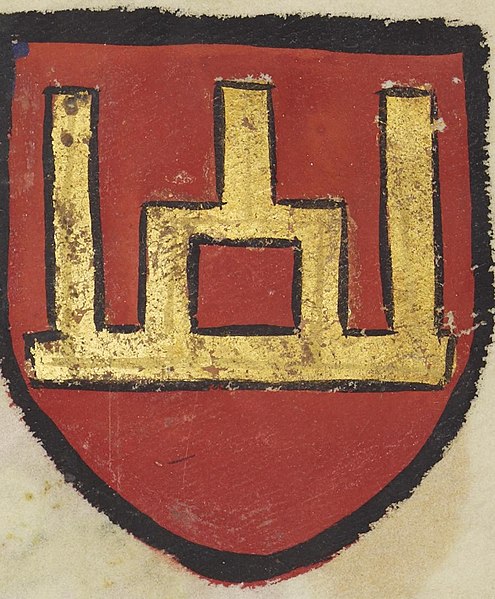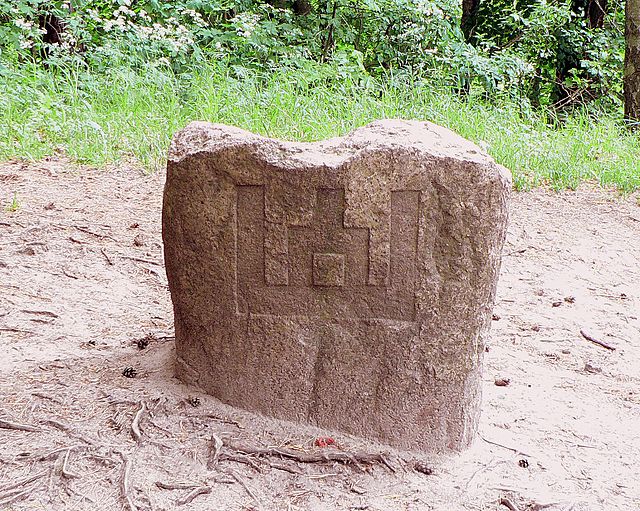The Columns of Gediminas or Pillars of Gediminas are one of the earliest symbols of Lithuania and its historical coats of arms. They were used in the Grand Duchy of Lithuania, initially as a rulers' personal insignia, a state symbol, and later as a part of heraldic signs of leading aristocracy.
Columns of Gediminas as drawn in an armorial by a Portuguese herald in the Council of Constance in 1416
Coat of arms of Trakai Voivodeship with standing warrior and the Columns of Gediminas from the Codex Bergshammar, dating to ~1435.
Coat of arms of Lithuania Vytis (Waykimas) with Columns of Gediminas, painted in the 15th century Wernigerode Armorial. Attributed to Vytautas the Great.
Seal of King and Grand Duke Augustus III, 1738
The House of Gediminid or simply the Gediminids were a dynasty of monarchs in the Grand Duchy of Lithuania that reigned from the 14th to the 16th century. A cadet branch of this family, known as the Jagiellonian dynasty, reigned also in the Kingdom of Poland, Kingdom of Hungary and Kingdom of Bohemia. Several other branches ranked among the leading aristocratic dynasties of Russia and Poland into recent times.
The Gediminid symbol in Rambynas Hill, Lithuania





